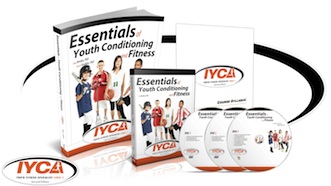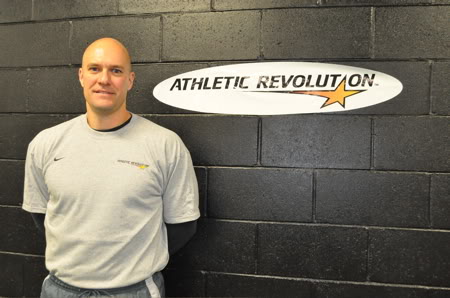Youth Sports Training Business Success
By Ryan Ketchum
Training youth athletes can be hard.
It might be one of the most enjoyable experiences in all of coaching, but it can be difficult to gain traction in your community if you have no previous relationships with coaches or sports organizations. The toughest part, much like any other aspect of business, is getting started. Once you have a little momentum behind you all it takes is consistency to grow your youth sports training business at an incredible rate.
For some reason it has taken me a few years to figure out just how easy and simple building your youth sports performance business can be if you follow the right steps.
Over the past several months I have implemented this system into our business with great success. It is almost scary how easy it is to follow and how quickly it can have an effect on your bottom line.
The greatest part of this system is that it doesn’t require you to be great at marketing or selling. I modified this system so that any coach can sell with the experience of their coaching and the results that come because of their great coaching. All you have to do to make this work is be consistent and dependable.
The first level of building an incredible youth sports training performance business is leveraging your network to build relationships with coaches, parents and leaders of youth sports organizations. You should focus on an area that you already have traction in and put all of your energy into it. If you aren’t sure where you might have traction I suggest you focus on middle school or younger athletes and female athletes. Stay away from football unless you are established or have some great connections. Building relationships is easier than most people think, but it requires you to step out of your comfort zone. For a little while you have to take a back seat to being the expert and ask for advice. Call up coaches, parents and organizational leaders and ask their advice on what they see a need for in their sports training. Take them to lunch, grab coffee and don’t step on their toes!
Once you have established a relationship and secretly found out what the biggest need in that sports community is (that is why you asked for advice earlier) you can offer a solution. The next step is offering a free clinic to help the coach or organization’s athletes better prepare for their sport. This clinic should be catered to meet the needs that were unveiled by those in your network.
To make this clinic extra successful you should have as much done for you material as possible. Write the emails for the coach, set up times that are convenient for the entire team, create the fliers and deliver the copies, etc. The easier you can make it on the coach or those in charge the more likely it is that you will get access to a lot of athletes.
When selling this free clinic idea to a coach you must explain how it will help them. How is this going to make their life easier and their athletes better? How can they use this in their practices and training?
Once you have established a date and set up the clinic your only job is to show up and be ready to wow the parents, coaches and athletes with your knowledge and coaching ability. Connect with the kids, make it fun and give them what they want. If you can show immediate results and improvement with the kids speed, agility or strength you will have won them over.
At the end of this free clinic it is time to move onto the third level. We must speak the language that coaches and parents are used to hearing, we have to do the unspeakable when talking about long term athletic development, we must offer a short term sport specific and skill specific academy!!!!
You might be wondering why we would offer a short term program if we have already won these athletes and their parents over?
The reason you offer a 6-8 week program to start is because that is what they are conditioned to believe will produce the best results. Create an offering that will help get them prepared for the season or improve a specific skill. The goal for the 6-8 week program is to educate them on the long term athletic development model and continue to build a relationship with the athletes and those in charge.
You can offer this program on site at the team’s location or at your own location. Many times it is easier to take the athletes off site to your location. We have got the athletes in our funnel now and we should do our best to move them into our long term training programs.
This 6-8 week program should be low cost, with a specific purpose. Our goal here is not to make a lot of money, but rather to gain the confidence of the athletes and the community. It is a great way to “slow cook” your leads and earn their trust. This works particularly well if you are new in the sports performance community.
Towards the end of the 6-8 week program you will now attempt to move these athletes on to level 4. This is your long term development program, your core offerings and strength and conditioning program. After 6-8 weeks of education and a phenomenal experience it should be an easy sell to get them into your programs so that they can continue their athletic development with you.
The key to transitioning these athletes from the short term to long term program is understanding their needs at the time of the conversion. If they are going in season it would be silly to recommend a three time per week training program, however you could offer a one-time per week program to ensure they maintain their results and continue to make progress so that come playoff time they are in the best condition. If they are going into an off season you will want to make the most appealing offer, which is a complete off season solution for them.
To recap here are the 4 levels of youth sports training business success:
Build and develop relationships
Set up FREE Clinics
Convert into low cost short term programs with specific training focus
Convert into long term development program
If you follow these simple steps you will have no problem becoming the go-to resource for athletic development and youth sports performance training in your community.







